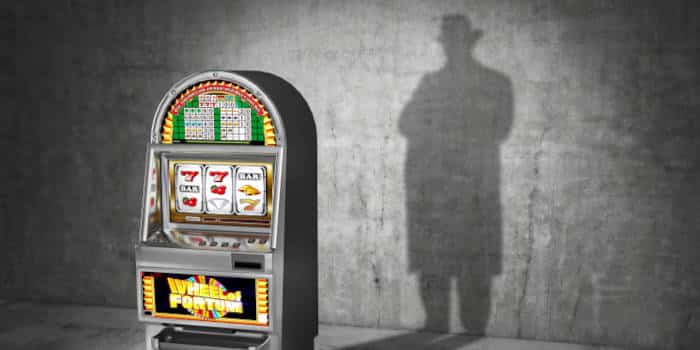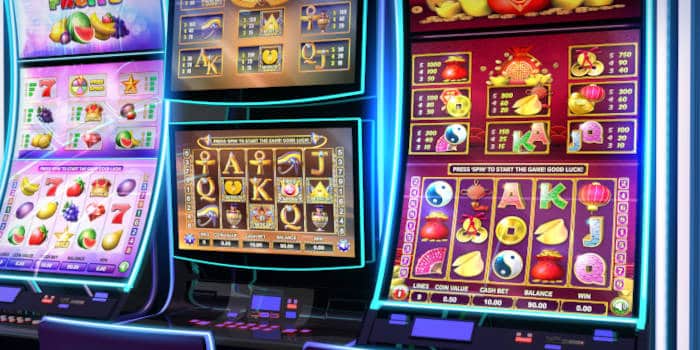Casino slots cheats
Players who try slots inevitably end up asking themselves how to cheat slots. Is slot cheating even a thing? Well, it turns out that there have been many successful attempts at cheating slot machines in history.
Some have succeeded, but almost none has gone unnoticed. This means that although it’s theoretically possible to cheat slots, the truth is that you will get busted sooner rather than later and suffer the consequences.
Still, we think it’s a good idea to take a look at some of the most popular and best-documented attempts to cheat slots, why they succeeded, and how they failed.
Bear in mind that some of these methods are not viable anymore, as slots have evolved a lot, going from mechanical contraptions to digitally powered devices.

Right, the first and perhaps easiest way to cheat slots and earn a pretty penny as you do so is to be the person responsible for slots. Computer and software engineers who specialize in slots, and are charged with maintaining them, can program them to favor certain outcomes or to behave in a certain way.
The drawback is that no matter how much results are fudged, centralized reporting means that aberrations are quickly noticed and looked into further. One of the people to get on the hook for cheating slots is Ronald Dale Harris, who worked for the Nevada Gaming Commission and tipped off a friend about how to cheat a keno game.
His friend soon won $100,000, but he was caught, and the investigation led back to Harris. Although Harris did not fudge a slot machine in this instance, the case raised awareness of the fact that the custodians of slot machines could fudge the numbers for their own gain.
2. The Hacking Collective
The other noteworthy case on this list has to do with capabilities that are not something your everyday person can do. For one capable individual, however, slots are an “easy” target. A notorious slot cheater operating out of St. Petersburg in Russia has been able to scour casinos around the world, siphoning off millions of dollars from slot machines he has been able to crack.
Crack, really? Well, as it turns out the software engineer from St. Petersburg who was running a successful company at one point decided that he could read into the Random Number Generator algorithms of slot machines. His success, according to Alex’s own account, has to do with the fact that these algorithms are only pseudo-random and they follow some internal logic.
Yet, finding out that internal logic is a gargantuan if impossible task. Alex, though, claims to have cracked it successfully. Agents linked to the enigmatic software whizz have traveled across the United States, Asia, and Europe, and identified machines that would experience a glitch in the odds and open a window of opportunity for players to get the upper hand.
Effectively, Alex is said to be able to tell when the odds would favor the player and he feeds this information to his agents across the world from an office in St. Petersburg. He is the only person to have not been caught cheating the slots on this list. Can you cheat slots this way? Perhaps you could, but you would need a solid understanding of engineering and computer science to even try!
3. The Magnet
Something as simple as a powerful magnet may seem a little odd to be used for cheating slot machines, but it was actually possible to do this at one point. As we noted, slot machines used to be mechanical, which meant that the reels would spin propelled by mechanisms made of metal.
In other words, you could interfere with the outcome of a spin by using a powerful magnet by sliding it on the side of the slot machine and pointing towards where the reels were. With some practice, people were able to figure out how to influence the reels so they would slow down and trigger a winning combination.
Of course, this is not to say that it was particularly easy to sneak in a magnet and then use it undisturbed. Even though machines were still made of metal for many years, cameras and casino security tended to be very tight, and besides, casinos have always been suspicious of players who tend to win more than average.
4. The Light Wand
This cheating method has been dealt with by most casinos now, but it was quite something in its day. It was perpetrated by one Tommy Glenn Carmichael who used a light wand that effectively blinded the optical device used by some slot machines to read how much has been bet and how much should be paid out as a result.
This meant that the machines were constantly confused, and Carmichael soon realized that when this happened the machine would pay out more than it should. You might think that this would be actually easy to catch and spot, but it wasn’t.
Carmichael spent 40 years fleecing casinos and winning at slot machines, making him one of the biggest cheats of his time, and one of the most ingenuine ones. The Light Wand will no longer work, however, so rigging slots this way is really no longer an option. Carmichael is said to have stolen millions.
5. Piano Wire
In the days when slots were mechanical, the opportunities to mess with them were many. This is why the Piano Wire worked briefly but the perpetrators were busted almost immediately after winning $50,000 off a slot jackpot.
A group of people decided that they could distract people on the gaming floor and used a piano wire to mess up the spinning of slot machines. One person would keep watch while the other opened a slot machine and inserted the piano wire inside.
It was a practiced move that took place the first time they tried it at the Caesars Boardwalk Regency Casino in 1982. They won, too, but upon reviewing security tapes, casino staff found out that the man had done something to the machine, which led to the perpetrators’ arrest.
The Piano Wire is of course not a legit cheating move in 2024 as casinos and slots have come a long way since.
6. The Bill Validator

The next casino slot cheat on our list is a little more modern. To perpetuate this cheat, players need a small device that alters the value of the money they want to deposit. Well, it doesn’t so much change the actual value of the money, as it makes the slot think that it does. The way it works is you get the device and hide it with a $1 banknote.
Then, you place the $1 against the bill validator and touch the devices’ prongs, which alters the value the slot is reading, turning a $1 banknote into a $100 banknote so far as the slot is concerned. Interestingly, the device can even add credits to the machines without using any banknotes after the first one.
In other words, each time you touch the bill validator with the device, you can add $100 to your bankroll. This type of fraud has been particularly popular in the early to mid-2010s, but it has mostly been caught now. There are still some slot machines that haven’t been retrofitted to counteract the device, though, so someone out there must certainly be pushing their luck.
7. The Yo-Yo
This slot cheat is simple. It worked for Bender from Futurama, and it worked for many gamblers back in the days when technology hadn’t quite caught up. Essentially, players would tie a string around a coin and deposit it into the slot machine.
As soon as the game’s start has been triggered, the player would pull out the coin using the string and use it to deposit again and start another game. The method is nothing you can use today, and worse still, all you would end up doing is getting caught trying to pull a coin out of a slot machine.
8. The Monkey Paw
Remember Carmichael? The guy who used his magic wand to blind the sensor and win millions of dollars from casinos over 40 years? Well, Carmichael never got bored of cheating the casinos, and he never got bored of innovating the way he cheated.
Other than figuring out he could use the Light Wand to mess up with the slot machines, he also pioneered some cheating techniques for video poker. His other noteworthy contraption is the Monkey Pay which is a guitar string that is tied to a bent metal rod, which would then fit into the video poker machine’s air vent.
It turns out that the coin hopper was within reach from the air vent, which made it possible for Carmichael to wiggle a bit with the rod and trigger a jackpot pay pretty much anytime he wished! The fact he did so undetected for 40 years shows how good he was at not just coming up with cheating devices, but also knowing how to use them.
9. The Locksmith

Dennis Nikrasch or The Locksmith was a talented criminal who managed to cheat Las Vegas casinos out of $15 million in the 1980s. Nikrasch was a gifted locksmith who was able to unpick any lock, but rather than putting his skills to something constructive, he decided to break into people’s homes.
He was eventually caught in sentenced. Upon his release, he headed for Las Vegas. Fascinated by slot machines, and the fact that the slot machines had an actual lock to pick, he was determined to try and learn how to duplicate keys for the locks without really having an original to go off on.
He eventually cracked the locks of slots and mastered the technique. Next, he figured that by using powerful magnets while inside the slot machine, he could trigger an instant jackpot win. He won big money during his stint but was caught shortly after and sentenced again.
Then in 1991, he was released and headed back to Las Vegas. The slot machines have changed a lot though and he knew that he couldn’t manipulate them. He got in touch with Genesee Crime Family member Eugene Bulgarino and the two set out to figure out how modern-day slot machines could be cheated. Nikrasch eventually figured out that a chip was responsible for the jackpot payouts, and he was able to clone it using the slot machines Bulgarino had bought.
The trick worked, and Nikrasch was able to perpetrate his crimes once again. He even brought in a team of partners to assist him, but eventually, things came crashing down after he refused to share a bigger percentage of winnings with them, prompting one team member to turn him and Bulgarino over to the police.
10. The Software Glitch
The Software Glitch is indeed a great way to manipulate the outcome of a slot game. This is where the good news ends, however. Most software glitches recorded have been caused by faulty software and casinos have completely refused to pay any winnings associated with this.
One Pauline McKee from Illinois, a 90-year-old woman, won $41 million from popular slot game Miss Kitty. She was devastated to find out that the payout was the result of an unintended software misfire, which was not a valid reason for honoring her payout.
The winning took place at the Isle Casino Hotel Waterloo which McKee tried to sue, but her lawsuit was dismissed as casinos are not liable for these glitches. What if a person could somehow make it so that the glitch does not register as a glitch?
There have been no reported cases other than Alex’s operatives so far, but who knows, we may one day hear about another cheating operation of this nature.
11. The Fake Coin
Fake coins are a rather popular way of cheating casinos or trying to. Slot machines though have been significantly improved over the past years to stop this kind of cheating. Interestingly, there are incidents of players using fake coins to this very day, as there is demand for them, and artificers are doing their best to keep up with developers of slots.
The introduction of digital money and accounts, or cashless options, has limited the opportunity for this type of slot cheating. The most popular case of a casino player using fake coins to cheat casinos is Louis “The Coin” Colavecchio who was rather successful up until 1998 when he was caught. Upon his release in 2006, he returned to casinos, trying to use fake coins, and briefly succeeded, but he was once again caught by the significantly improved casino security.
12. The Shaved Coin
The Shaved Coin method is rather laborious and not worthwhile – at first glance. Yet, players have been doing it. Shaving coins means reducing their precious metal content. For every X number of coins, a player would deposit he would have saved Y coins worth of precious metal.
The method was rather difficult to combat, but the advancement of technology and the use of light sensors to register payments made it much harder and nearly impossible for this method to be used any longer, and not by slot cheats in major casino hubs.
13. Top-Bottom Joint
How the top-bottom joint came to be is not exactly clear, but someone must have thought about what would happen if they connected the coin slot and the coin chute and pressed them at the same time. Well, some players did try and as it turns out, this method allowed for some time to release all the coins that a slot machine would hold.
The device itself was rather prosaic, a q-shaped metal wire that was tied to a longer wire, and the two were connected with the coin slot and chute respectively. Rather unimpressive and even uncouth, but a great success all the same!
Disclaimer: Cheating at casinos knowingly and purposefully could have severe consequences for you as an individual. You will most certainly face a ban from the property and possibly face criminal prosecution by authorities. GamblingNews does not condone any form of cheating and has created this article to only exemplify successful attempts at cheating that have all ended up the same way – with the people responsible being caught.

Luke Thompson
EditorLuke is a media graduate who is looking to build upon his experiences from his strong love of sports betting and casino games which started during his first year of college. His fresh mindset always brings new content ideas to the team and his editorial skills will continue to grow with the help of the upper management team at GamblingNews.com.
Must Read
13519 | 13520 | 13521 | 13522 | 13523 | 13524 | 13525 | 13526 | 13527 | 13528